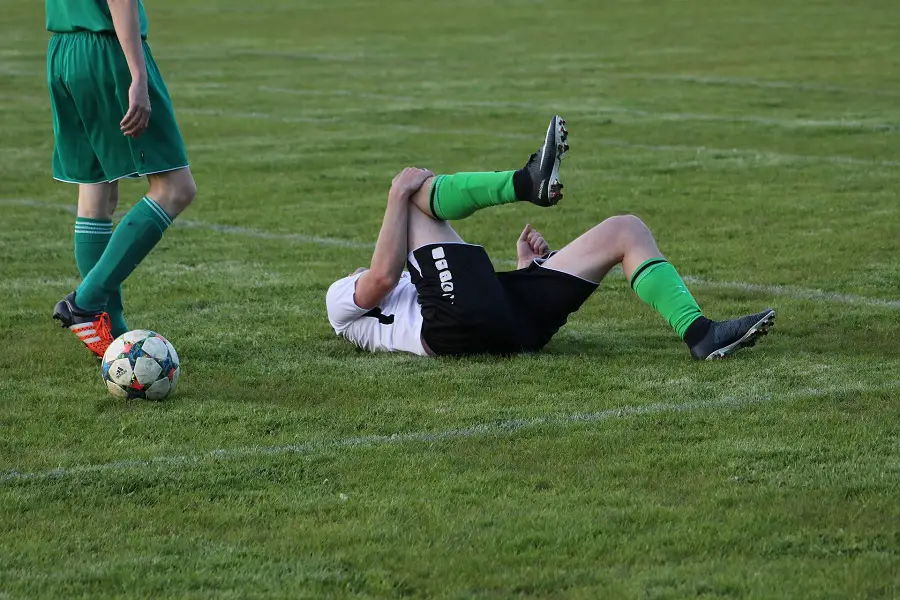The fact is sports injuries are a common occurrence especially among athletes of all levels.
They can range from minor sprains and strains to serious fractures and dislocations. And, as we all know, injuries can happen to any part of the body, from head to toe.
So, when playing sports, it’s important to know the different types of injuries that we might be at risk for and how to prevent them.
Sprains and Strains
Sprains and strains are some of the most common sports injuries.
A sprain occurs when a ligament is stretched or torn, while a strain is an injury to a muscle or tendon.
These types of injuries can be caused by sudden movements, twisting, or stretching beyond the normal range of motion.
According to Mayo Clinic to prevent sprains and strains, it’s important to warm up properly before exercising and stretching regularly (1).
Also, wearing the right protective equipment may help to prevent these types of injuries (2).
Fractures
Fractures are breaks in bones and can be caused by a sudden impact or overuse.
We don’t like it because they can range from minor hairline fractures to major breaks that require surgery. To prevent fractures, American
Academy of Orthopaedic Surgeons suggest to wear protective gear, use proper technique, to be careful and gradually increase the intensity and duration of your workouts (3).
Dislocations
Dislocations occur when the normal alignment of the bones in a joint is disrupted.
This can happen due to a sudden injury, such as a fall or a blow to the joint, or as a result of gradual wear and tear of the joint.
Dislocations can occur in any joint of the body, but according to MedlinePlus they are most common in the shoulder, elbow, finger, hip, and knee joints (4).
When a joint is dislocated, the bones that make up the joint are no longer in their normal position.
This can cause pain, swelling, and difficulty moving the joint. In some cases, dislocations can also cause nerve or blood vessel damage.
Treatment for a dislocation typically involves moving the bones back into their normal position, which is called reduction.
This is often done by a healthcare professional using manual manipulation or a special device. After the bones are back in place, the joint may be immobilized with a brace or cast to allow for healing.
Physical therapy may also be recommended to help restore the joint’s range of motion and strength.
It’s important to seek medical attention if you suspect a dislocation, as leaving it untreated can cause further damage and complications.
Concussions
A concussion is a type of traumatic brain injury (TBI) that occurs when the head or body experiences a sudden jolt or blow that causes the brain to move rapidly within the skull.
According to Centers for Disease Control and Prevention this movement can cause damage to the brain cells and disrupt normal brain function (5).
Concussions can occur in a variety of ways, but they are most commonly associated with sports-related injuries, falls, or motor vehicle accidents.
Symptoms of a concussion can vary widely, but they typically include headache, dizziness, nausea, confusion, memory problems, and sensitivity to light or noise.
If someone suspects that they or someone they know has sustained a concussion, it is important to seek medical attention as soon as possible.
A healthcare professional can evaluate the injury and recommend appropriate treatment, which may include rest, medication, and physical therapy.
In sports, preventing concussions involves several measures, including wearing appropriate protective gear, following proper technique, and avoiding unnecessary contact or collisions.
Athletes should also be aware of the signs and symptoms of a concussion and seek medical attention if they suspect an injury.
Additionally, coaches, parents, and other team officials should be educated on the signs and symptoms of concussions to help prevent and manage these injuries in athletes.
Overuse injuries
Overuse injuries occur when a part of the body is injured from repetitive motions or prolonged strain.
They can include stress fractures, tendinitis, and bursitis. To prevent overuse injuries, it’s important to gradually increase the intensity and duration of your workouts, take breaks when needed, and use proper technique.
Sports injuries can be painful and can keep you from being active for a while.
However, by understanding the different types of injuries and how to prevent them, you can reduce your risk of injury and keep yourself healthy and active.
Always keep yourself properly equipped and protected, know your limits, and never hesitate to seek medical help when necessary.
And try to remember; preventing injuries is always better than having to treat them!
Leave Feedback: Was this article helpful?

